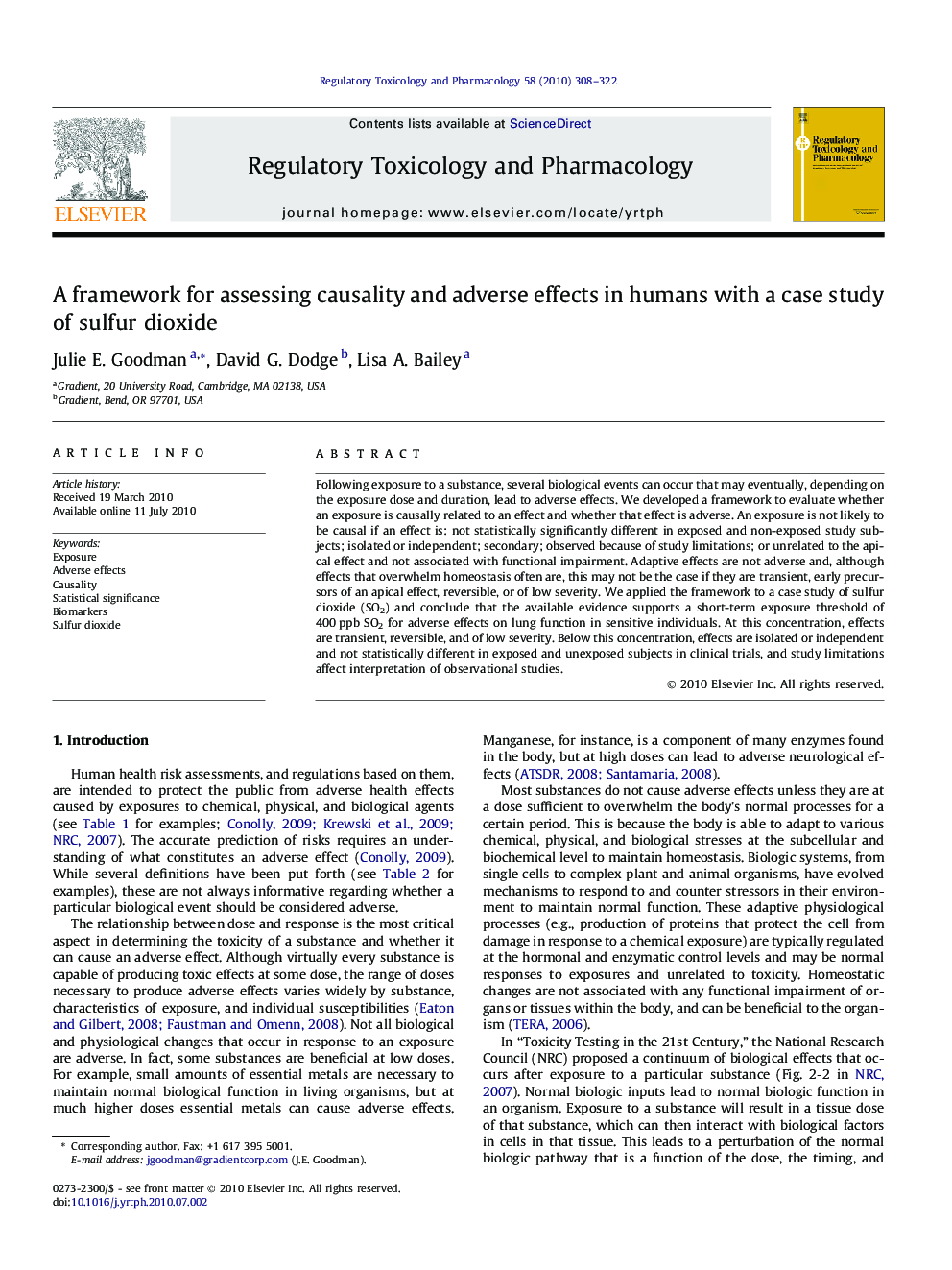| کد مقاله | کد نشریه | سال انتشار | مقاله انگلیسی | نسخه تمام متن |
|---|---|---|---|---|
| 2592532 | 1132026 | 2010 | 15 صفحه PDF | دانلود رایگان |

Following exposure to a substance, several biological events can occur that may eventually, depending on the exposure dose and duration, lead to adverse effects. We developed a framework to evaluate whether an exposure is causally related to an effect and whether that effect is adverse. An exposure is not likely to be causal if an effect is: not statistically significantly different in exposed and non-exposed study subjects; isolated or independent; secondary; observed because of study limitations; or unrelated to the apical effect and not associated with functional impairment. Adaptive effects are not adverse and, although effects that overwhelm homeostasis often are, this may not be the case if they are transient, early precursors of an apical effect, reversible, or of low severity. We applied the framework to a case study of sulfur dioxide (SO2) and conclude that the available evidence supports a short-term exposure threshold of 400 ppb SO2 for adverse effects on lung function in sensitive individuals. At this concentration, effects are transient, reversible, and of low severity. Below this concentration, effects are isolated or independent and not statistically different in exposed and unexposed subjects in clinical trials, and study limitations affect interpretation of observational studies.
Journal: Regulatory Toxicology and Pharmacology - Volume 58, Issue 2, November 2010, Pages 308–322